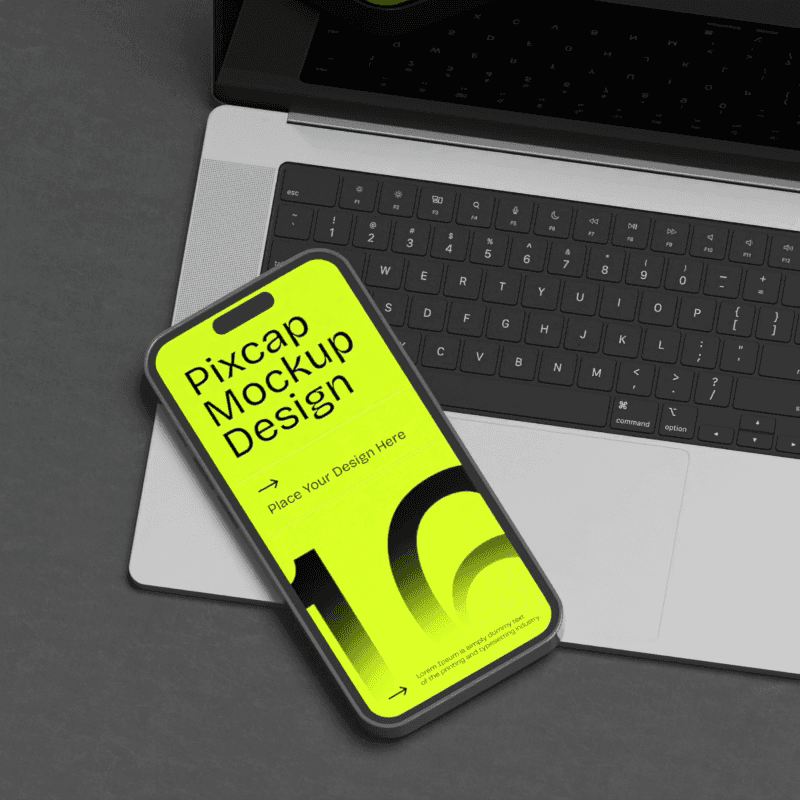Envision being able to breathe life into a flat, 2D design—making it almost burst from the page in semi-3D glory. Welcome to the world of isometric drawing!
This grand technique has uniquely revolutionized how we perceive and present designs, but do you know what it exactly is called isometric projection?
Stick with us through this article as I help unpack this artistic process that innovatively blends mathematics with art.
Introduction to Isometric Drawing
Definition of Isometric Drawing
Before delving into any topic, understanding terminologies sit at the forefront. So, let's tackle our primary keyword upfront: what is an isometric drawing?
Isometric drawing refers to a technical way of representing a 3D object in two dimensions. It’s a kind of graphical projection where all three axes of space appear equally foreshortened, and angles between any two axes are 120 degrees. The uniqueness of isometric projections lies in its presentation; objects are not portrayed in perspective, thus eliminating focal points and spotlighting each dimension equitably.
Importance and Applications of Isometric Drawing
Deciphering why something holds any significance often clarifies its concept better than iterating about 'what' it represents. Such is for example the case for understanding the importance and finding out where people apply isometric drawings extensively.
Clarity: By providing equal emphasis on each dimension without falsely prioritizing any particular view, these drawings work wonders when trying to understand complex structures or machinery.
Perspective Consistency: A significant benefit lies in their lack of perspective change—no matter how you look at them, they always render an unwavering viewpoint.
Usability across various fields: These drawings find applications within diverse areas like architecture for creating building drafts, in graphic design for game development or making infographics/animations and even product design.
By blurring the line between illusionary depth and flat surfaces, isometric drawings serve as robust blueprints for many professionals. They not only aesthetically uplift your designs but also revolutionize how we visualize and project our spatial ideas.
Understanding the Principles of Isometric Drawing
Unraveling what an isometric drawing is requires immersing ourselves into its foundational principles and core elements. These principles serve as the foundation for creating compelling and accurate drawings that portray objects in a three-dimensional perspective.
Explaining the Concept of Isometric Perspective
At first glance, an isometric drawing might seem daunting or complex. But once we delve into its underlying concept - the isometric perspective, all apprehensions will fade away. The term "isometric" originates from Greek words 'isos' (equal) and 'metron' (measure). Therefore, it represents a method of visual representation where all three dimensions of an object are displayed with an equal measure of prominence.
The beauty of the isometric perspective lies in maintaining equal angles of 120 degrees between all axis while presenting a comprehensive view without any foreshortening. This lack of depth and angle-based distortion results in clear and easily comprehensible drawings.
Moreover, although these drawings offer a 3D view, they're created on a 2D plane using simple geometric shapes. Hence enabling simultaneous visualization and representation of an object from front, top, and side views—an aspect unique to this medium is what sets it apart.
Differences between Isometric Drawing and Other Types of Drawings
Capturing nuances like no other model does make it essential to distinguish between isometric drawings and other types such as orthographic projection or one-point perspectives.
Firstly, orthographic projections utilize horizontal lines drawn at vertical angles to represent different facets separately—front view on one section, side view on another, and so forth. In contrast, an isometric drawing allows for simultaneous representation three dimensional objects on the same surface.
Secondly, unlike one-point perspective wherein parallel lines converge towards one singular point allowing us to perceive depth; conversely, isotropic drawings have parallel lines remaining equidistant all the lines throughout. Consequently creating uniform emphasis on all sides without any vanishing points or converging lines.
Fundamentally, the major differentiating characteristic between isometric drawings and others resides in the utilisation of angles, perspectives, measurements and depiction of space to offer comprehensiveness without distortion. This simultaneous overview brings a whole new level of understanding to design or architecture practices and allows for enhanced visualization—a distinctive feature of isometric grids that accounts for its popularity over years.
Components and Techniques of Isometric Drawing
This section hops on to the essential components necessitated by isometric drawing and the tactics you can harness to craft a perfect piece.
The Basic Tools and Materials Needed for Isometric Drawing
First and foremost, let's discuss what foundational tools you need in your toolbox before starting your journey of creating an isometric drawing. While each drawer may prefer different art supplies depending on their style, there are some common materials typically used:
Drawing Paper: Choose a dependable quality that can handle multiple erasures without tearing.
Pencils: Using a range of pencils from hard (H) to soft (B) will enable a more distinct detailing in sketches.
Ruler or Straight Edge: You need it to sketch out perfect lines and angles.
These tools form the bare minimum landscape for beginning with your isometric drawing adventure. They're truly elementary but hold immense importance in crafting a professionally brilliant drawing.
Step-by-step Guide on How to Create an Isometric Drawing
For beginners wondering "what is an isometric drawing", this hands-on guide will aid you step-by-step through the process of wrangling an idea into existence on paper.
Start off by marking light pencil dots at equal intervals along each side of your paper using a ruler, forming equally spaced gridlines diagonally across the page in three directions: left diagonal (_), vertical (|), right diagonal (/). What we get now resembles diamond-like shapes pointing up and down —the basis for our design landscape.
Now pick one object from your daily life - it could be as simple as a box or more complicated like a coffee mug, just something that seems interesting enough to draw out its dimensions.
Begin with constructing the primary shapes from where else then but our 'dots' formed earlier! Look closely at your chosen object, try breaking it down visually into basic geometric forms.
Slowly, start adding more details - remember to consider every perspective, work on smaller details such as corners and edges.
Building an expertise in isometric drawings takes time and practice but by breaking down complex objects into their simplest forms, you're well on your way to becoming proficient!
Benefits and Advantages of Isometric Drawing
Isometric drawing, rather than being a mere artistic whim, serves as a crucial link in the chain of communication and problem-solving in various industries. It offers numerous benefits that extend from boosting visualization to facilitating efficient tackling of design challenges.
Enhanced Visualization and Communication of Ideas
One core advantage proffered by isometric drawings lies in its capability to promote enhanced visualization. This form of drawing creates things as they appear in our real-world three-dimensional space — but on a two-dimensional scale. Thus, it streamlines comprehension through visual representation.
This feature is especially worthy for non-technical individuals who may find it challenging to grasp complex designs or structures via conventional blueprints or schematics. A refrigerator's intricate internal machinery or an automobile's densely packed engine compartment, rendered isometrically, can unveil every constituent part and their interconnectedness with unerring clarity.
Moreover, this method aids greatly in conveying ideas more effectively between developers and stakeholders. Because what is an isometric drawing if not an extraordinarily versatile communication tool? It bridges the gap between concept and implementation; leaders' visions can be illustrated precisely for engineers to materialize while feedback loops buttress quality management efforts.
Efficient Problem Solving in Designing and Engineering
In addition to visual acuity, another pivotal benefit uncompromisingly related to 'what is an isometric drawing', underscores its role in addressing issues mightily prevalent in designing and engineering realms. By depicting multiple aspects simultaneously — front view, top view, side view — critical situations often masked when relying exclusively on orthographic projection emerge with striking prominence.
Be it testing potential layouts for production lines or spotting clashes within building construction models before materials are ordered thereby averting considerable downstream cost inflation-Delin
estrated objects gain tangible presence allowing engineers to anticipate and thwart roadblocks ahead of time using these "drawn-to-scale" drafts itself as potent tools.
Furthermore, precision planning that's inherent to this system of drawing many times tends to shorten product development cycles. Hiccups and miscalculations that could spell delays are mostly preempted courtesy of the insightful foresights unleashed when ideas and concepts get crystallized into detailed isometric visuals.
In essence, the isometric approach helps strike a concerted balance between efficiency on one hand— reducing waste, invoking predictability — and innovation on the other — facilitating improved problem solving by enabling comprehensive reviews from diverse perspectives earlier in design phases.
Challenges and Tips in Creating Isometric Drawings
One of the areas where I love sharing my expertise is in the challenges that budding artists face when trying to create these captivating drawings. By understanding common problems, it's easier to navigate through this creative process. Furthermore, by implementing practical tips and techniques can fast-track your progress.
Common Mistakes to Avoid in Isometric Drawing
When we ask ourselves, "What is an isometric drawing?" often we're not fully prepared for the intricacies involved. A few mistakes can hinder capturing an isometric object's true three-dimensionality. Noticing these errors early on can save a lot of time and frustration:
Incorrect Angles: An isometric projection should have all three axes at 120 degrees apart from each other.
The Absence of Depth: Mishaps occur when failing to differentiate between nearer and farther parts of an object, creating a lacky depth perception.
Scale Errors: All lines parallel to a given direction are drawn at the same scale.
By keeping these common pitfalls in mind, you'll be well on your way toward crafting more accurate and appealing isometric artwork.
Tips for Achieving Accurate Measurements and Angles in Your Drawings
Guidelines exist not just to help avoid mistakes but also as proactive measures ensuring success in producing exceptional isometric artworks:
Usage of Grids: Using an isometric grid provides ease in maintaining equal angles of 120 degrees.
Controlling Line Thickness: Varying thickness helps indicate whether an edge is close or distant based on line weight.
Manage Proportions Definitively: Staying consistent with your dimensional ratios will contribute positively towards achieving perspective fidelity.
Mastering accuracy requires practice ‒ patience plays a pivotal role too; both form pillars supporting your path towards perfecting delightful geometric illustrations much-desired globally.
As drawing devotees journey the course of understanding what an isometric drawing is, a world abundant with immense creative opportunities will begin to unravel. Undeniably‚ diligent application of these points discussed earlier can significantly illuminate this captivating path.
Examples and Inspirations for Isometric Drawings
Exploring the realm of isometric drawings, one can find an array of stunning illustrations created by applying these unique techniques. These render real-world objects in a new light, offering viewers a distinctive perspective.
Illustrations of Real-life Objects using Isometric Drawing Techniques
What makes isometric drawing special extends beyond its geometric principles. It possesses an inherent capability to capture real-world objects with remarkable precision. Consider how game developers design intricate virtual environments— from serene landscapes to complicated cityscapes— all possible through precisely calculated angles and proportions that define the core essence of what is an isometric drawing.
Furniture Design: Furniture designers use isometric drawing as their secret weapon when presenting new concepts or designs. By creating 3D renditions of chairs, tables, and sofas, they provide clients with a realistic view of the final product.
Architectural Structures: Architects serialize architectural models via isometric sketches. From towering skyscrapers to quaint countryside cabins, this technique presents structures in their entirety — capturing every nook and corner in perfect symmetry.
Animated Sprites: The thriving video game industry employs isometrics extensively too! Envision popular games like 'Monument Valley', where an immersive world exists within your screen - all devised ingeniously using principles of isometry.
Creative Examples of Artwork Utilizing Isometric Perspective
The magic woven by artists utilizing fundamental tenets of isometry further underscores this question: what is an isometric drawing? Their artworks breathe life into figures trapped within two-dimensional confines.
Consider how M.C Escher's masterpieces transport your mind through labyrinthine stairs spiraling endlessly upon themselves—a fantastical illusion achieved through strategic application of the three axis theory integral to isometrics.
Picture Lola Dupré's stunning photographic collages wherein she dissects single photographs into numerous small pieces and arranges them to invisibly morph objects' structures, creating optical illusions that confound the beholder.
Artists are weaving intricate patterns of fascinating realms, all within the bounds of isometry. Their creations signify the expansive possibilities held within a 30-degree angle's embrace— encapsulating what is an isometric view and drawing in its dynamic essence. Thus, whether it's real-life illustrations or creative artworks, isometry continues to command attention, sparking inspiration and awe with its unique perceptivity.
Conclusion: The Future of Isometric Drawing in Various Industries
To grasp what is an isometric drawing, we need to acknowledge its widespread application in various industries.
Isometric Drawing in Architecture, Engineering, and Manufacturing
Drawing the curtain close on what is an isometric drawing, let's delve into its relevance in different sectors. Particularly in architecture, engineering, and manufacturing—these fields are significantly dependent on visual description and detailed depiction of structures.
Architects often use isometric drawings to envision and express concepts with depth, providing a comprehensive view that captures all angles of a structure. Notably so, their communicative power enables architects to convey intricate design specifics effectively.
In engineering too, be it mechanical or civil; these 3D drawings are instrumental. Engineers resort to them for highly detailed specifications to guide complex assemblies or construction projects.
Meanwhile, manufacturers discern tremendous value in isometric designs when building prototypes or machinery parts. These diagrams provide clarity on how components fit together as they offer three-dimensional detail making interpretation much easier.
These examples display how profoundly the query - 'what is an isometric drawing' - carries itself deep into architecture, engineering and manufacturing practices.
The Integration of Technology with Isometric Drawing Tools and Software
Our exploration into what constitutes an isometric drawing wouldn't suffice without recognizing the role technology plays in this arena today. Various AI-driven tools and software have emerged lately broadening the potential of conventional iso-drawings.
Sophisticated softwares like CAD (Computer Aided Design) transform traditional drafting methods by digitalizing them. This tech-based approach enhances scale precision and eliminates human-errors prominently witnessed during manual sketching.
Further ahead are Augmented Reality (AR) based apps breaking new grounds by infusing lifelike detailing into iso diagrams. Such technologies can project interactive 3D images onto physical spaces paving way for immersive experiences unheard before!
New-age axes marking tools coupled with virtual measurements are advancing the prospects of isometric drawings, making them more precise and user-friendly at the same time.
The telling fact about pondering over 'what is an isometric drawing', therefore, isn't just its definition or process. It also nudges us to realize this technique's evolving future shaped by intersecting technology with old-world artistry. This drives forward my belief: the golden age for iso-drawing awaits us still.
Remember one thing - as we move towards this futuristic facade of isometric drawings; be it modern software or AR tools, their core would always remain nested in basic convention—that’s what makes exploring what is an isometric drawing even more fascinating!














